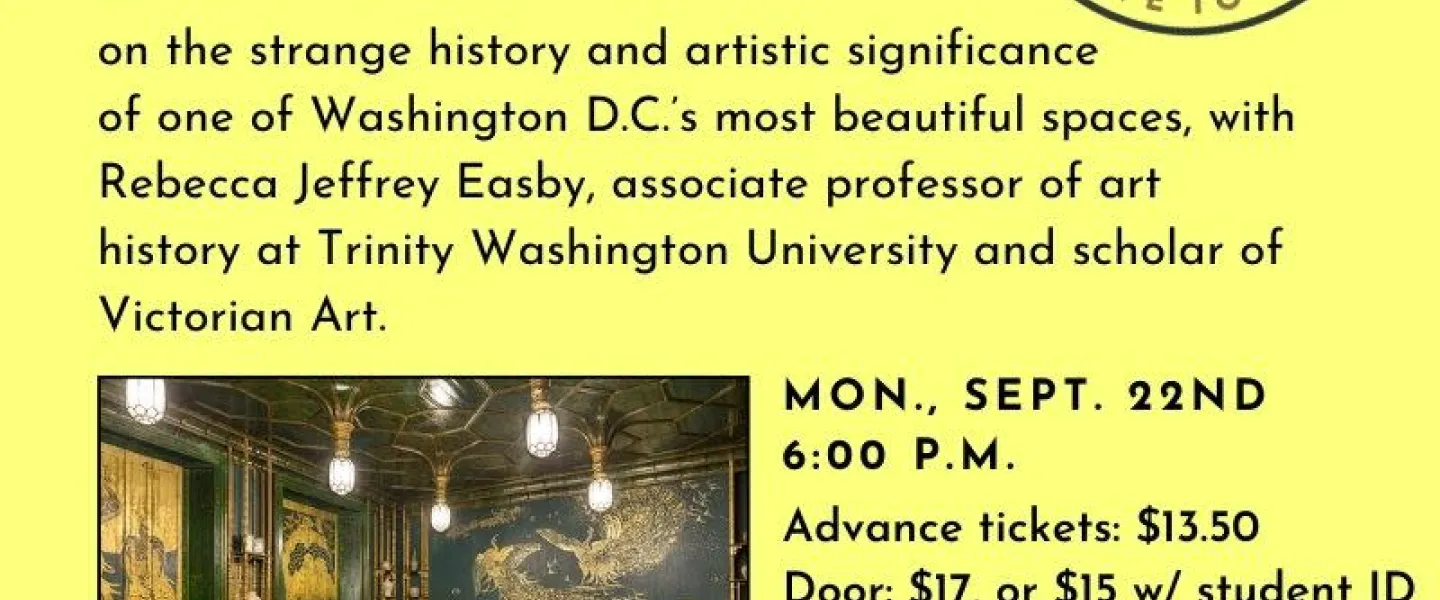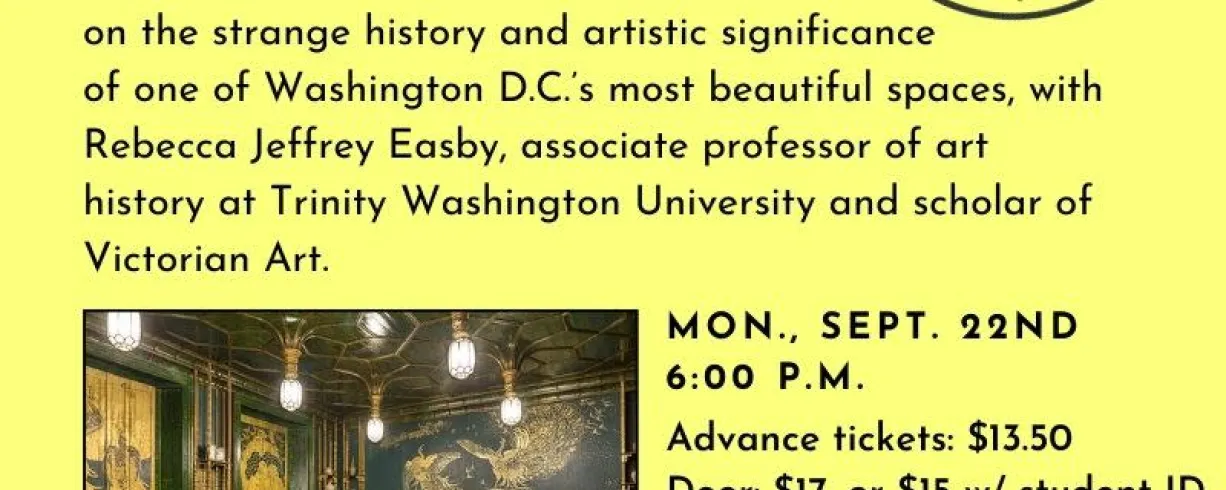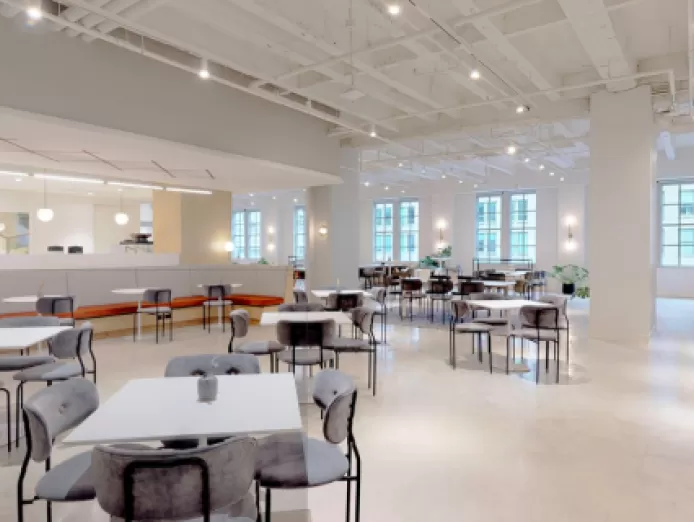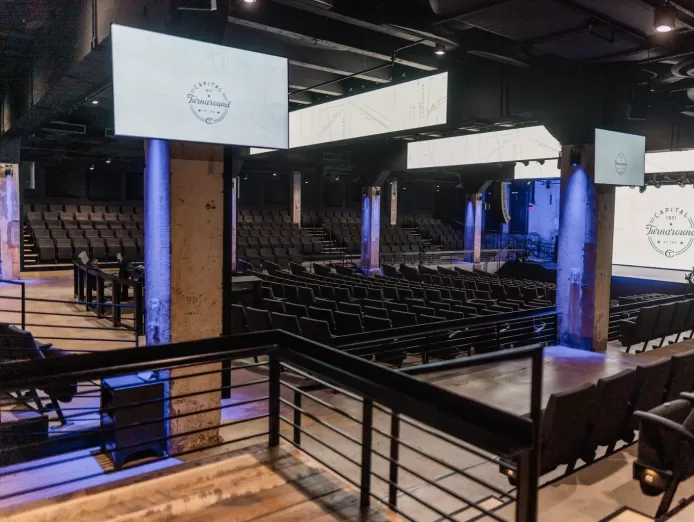“Whistler and the Peacock Room,” on the strange history and artistic significance of one of the city’s most beautiful spaces
Profs and Pints DC presents: “Whistler and the Peacock Room,” on the strange history and artistic significance of one of the city’s most beautiful spaces, with Rebecca Jeffrey Easby, associate professor of art history at Trinity Washington University and scholar of Victorian Art.
The Peacock Room of the Smithsonian’s Freer Gallery is a hidden gem, an amazing work of interior decorative art, and a space originally meant to look otherwise and exist elsewhere. Initially built in the 19th century as the dining room of a luxurious London townhouse, it became the site of one of the most public and celebrated battles ever pitting an artist against a patron.
The story of how the Peacock Room came to be and to exist within the Smithsonian offers a fascinating lens for examining the workings of the art world and the mind and career of an important and irrepressible American artist, James McNeill Whistler.
Explore the fascinating story of the Peacock Room and the controversy surrounding it with Rebecca Easby, a scholar of 19th century art and Victorian exhibition practices who previously has given excellent Profs and Pints talks on the impressionist artists whose works are on display in our city.
Professor Easby will familiarize us with the checkered career of Whistler, an artist known to be witty, temperamental, and a troublemaker. You’ll learn about his connection with the Aesthetic Movement, which championed “art for art’s sake”—stressing appearance over function—and helped pave the way for modern art. We’ll discuss how this style can be seen in Whistler’s paintings, many of which now hang in the Freer and in the National Gallery of Art, and talk about the Peacock Room as the product of the vogue for Asian art in Victorian England.
You’ll learn how the Peacock Room began as a collaboration—and ended as a point of bitter contention—between Whistler and his wealthy patron Frederick Leyland, a Liverpool shipping magnet. It was intended to reflect both Leyland’s passion for collecting and the Asian-influenced aesthetic of the time, but it also came to reflect what can happen when relations between artist and patron go south.
Finally, we’ll look at how the Peacock Room made its way to the Smithsonian by way of Detroit.
It’s a talk that will be full of spicy Victorian gossip and scandal and have you eager to visit the Peacock Room on your own. (Advance tickets: $13.50 plus sales tax and processing fees. Doors: $17, or $15 with a student ID. Listed time is for doors. The talk starts 30 minutes later.)
Image: The Peacock Room as captured in a photo by Smithsonian's Freer and Sackler Galleries





